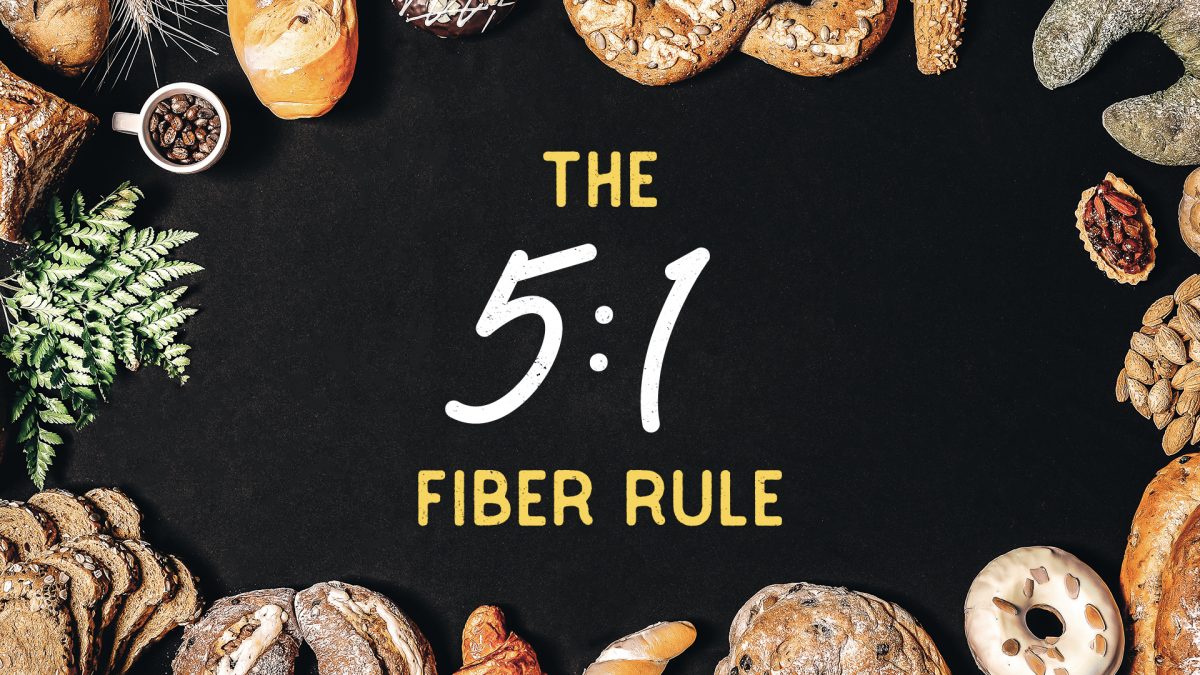When people think fiber, they think constipation. And it’s true: If we could get Americans to eat just the minimum recommended daily intake of fiber-containing foods, we could save our country $80 billion—and that’s just from the effects on constipation alone. But that’s not all. “Accumulating evidence indicates that greater dietary fiber intakes reduce risk for type 2 diabetes, cardiovascular disease, certain cancers, weight gain, obesity, and diverticular disease, as well as functional constipation.” So, we need to eat more fiber-rich foods, which means eating more whole grains, vegetables, fruits, and legumes (beans, split peas, chickpeas, and lentils).
As fiber intake goes up, the risk of metabolic syndrome appears to go down, with less inflammation and an apparent step-wise drop in obesity risk. It’s therefore no surprise that greater dietary fiber intake is associated with a lower risk of heart disease: There is a 9 percent lower risk for every additional 7 grams a day of total fiber consumed, which is just some rice and beans or a few servings of fruits and veggies.
How does fiber do its magic? What are the mechanisms by which dietary fiber may extend our lifespan? It helps get rid of excess bile, feeds our good bacteria, and changes our gut hormones, which collectively helps control our cholesterol, body weight, blood sugar, and blood pressure, thereby reducing the risk for cardiovascular disease. Reducing inflammation is a whole other mechanism by which fiber may help prevent chronic disease.
An accompanying editorial to a fiber and heart disease meta-analysis implored doctors to “enthusiastically and skil[l]fully recommend that patients consume more dietary fibre”––which means a lot of whole plant foods. If we do buy something packaged, however, the first word in the ingredients list should be “whole.” But, even if it is, the rest of the ingredients could be junk. A second strategy is to look at the ratio of grams of carbohydrates to grams of dietary fiber. We’re looking for about 5 to 1 or less. For example, whole-wheat Wonder Bread passes the first test: The first word in its ingredients list is “whole.” However, it then includes corn syrup and the contents of a chemistry set. So, let’s see if it passes the 5-to-1 rule.
In my video The 5-to-1 Fiber Rule. I show examples of some Nutrition Facts labels. The whole-wheat Wonder Bread lists 20 grams of carbs and 2.7 grams of dietary fiber per serving. Dividing the carbohydrates by the dietary fiber, 20 divided by 2.7, is about 7, which is obviously more than 5, so back it goes onto the shelf. It’s better than white Wonder Bread, though, which comes in at over 18. Ezekiel sprouted grain bread, however, makes the cut: 15 divided by 3 equals 5.
You can do the same thing with breakfast cereal. Multi-Grain Cheerios sounds healthy but has a ratio over 7. Uncle Sam original cereal is an example of one that makes the cut, sliding in under 4.
The editorial concluded that the “recommendation to consume diets with adequate amounts of dietary fibre may turn out to be the most important nutritional recommendation of all.”
I love producing videos about practical, day-to-day decision-making. Next time you go to the grocery store, look for products that fit the 5-to-1 ratio rule. They aren’t easy to find!
Eating fiber-rich foods is more than just a way to avoid constipation. For example, watch my videos Fiber vs. Breast Cancer and How to Prevent a Stroke.
There’s a misconception that we can’t digest fiber. We can’t do it alone, but we can with a little help from our gut flora friends. See Prebiotics: Tending Our Inner Garden and Gut Microbiome: Strike It Rich with Whole Grains.
This isn’t to downplay all the suffering caused by constipation. Check out How Many Bowel Movements Should You Have Every Day? and Should You Sit, Squat, or Lean During a Bowel Movement? to learn more.
Isn’t this talk of fiber reductionist? Good question! So good, in fact, that I created an entire video about it. See Is the Fiber Theory Wrong?.
In health,
Michael Greger, M.D.
PS: If you haven’t yet, you can subscribe to my free videos here and watch my live, year-in-review presentations:
- 2012: Uprooting the Leading Causes of Death
- 2013: More Than an Apple a Day
- 2014: From Table to Able: Combating Disabling Diseases with Food
- 2015: Food as Medicine: Preventing and Treating the Most Dreaded Diseases with Diet
- 2016: How Not To Die: The Role of Diet in Preventing, Arresting, and Reversing Our Top 15 Killers
